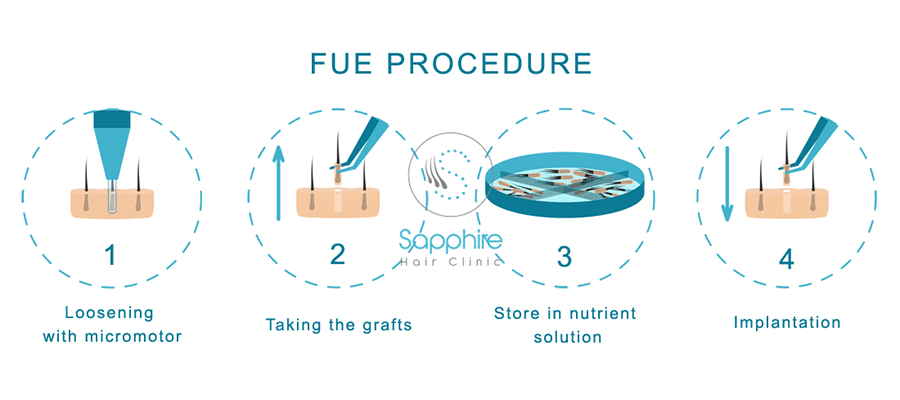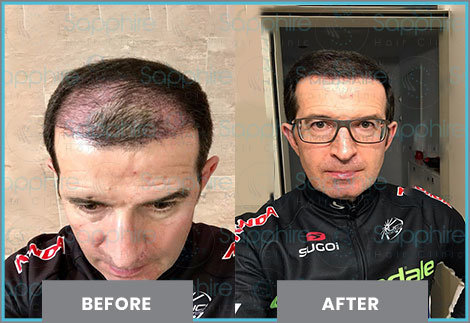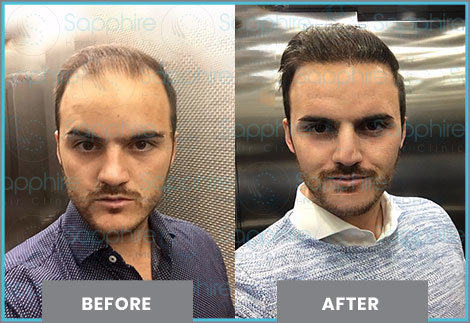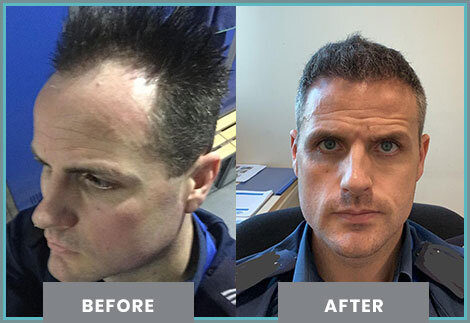Table of Contents
FUE Hair Transplant Turkey
While it doesn’t necessarily impact your physical health, excessive hair loss takes a toll on your self-esteem and mental well-being, so treating it is essential. The only viable, permanent solution to this problem is a hair transplant.
Transplants using the fue hair transplant turkey are the go-to option for men and women around the globe. They offer fast, painless, and natural results, but their hefty price in the western world is a significant deterrent for all those experiencing balding and hair thinning.
Fortunately, clinics in Turkey offer affordable transplants to all international patients. At a hair clinic in Istanbul, Turkey, you can expect high-quality FUE transplants using state-of-the-art technology. However, before you schedule the procedure, you should get familiarized with what FUE is, how it works, and what results you could achieve. So, let’s find out.
Is FUE hair transplant permanent?
Yes, a hair transplant using FUE (Follicular Unit Extraction) is regarded as a permanent cure for baldness. Individual hair follicles are removed from the donor area, which is often the back of the scalp, and then transplanted into the recipient area, which is the area that has experienced hair loss, during a FUE treatment. These implanted hair follicles are resistant to the hormone dihydrotestosterone (DHT), which in people with a genetic predisposition results in hair loss.
When the transplanted hair follicles have effectively established themselves and begun to grow in their new site, they will carry on acting just like the donor area hair. They will therefore typically continue to grow throughout the person’s lifetime, just as they would have in their original site, and are less sensitive to DHT.
The success of the treatment depends on a number of criteria, including the quality of the donor hair, the expertise of the medical team, the design of the hairline, and appropriate post-operative care, even if the transplanted hair is permanent. A natural element of the hair loss process in those with genetic hair loss is the original, non-transplanted hair that is still vulnerable to DHT thinning and falling out over time.
It’s important to speak with a licensed and skilled hair transplant surgeon who can assess your unique situation and provide the best recommendations before performing any hair transplant treatment.
Which is better FUE or FUT?
The decision between FUE (Follicular Unit Extraction) and FUT (Follicular Unit Transplantation) is influenced by a number of variables, such as your own hair loss pattern, your preferences, and the counsel of a skilled hair transplant surgeon. Each method has advantages and things to keep in mind:
(Follicular Unit Extraction, or FUE)
Advantages:
FUE is a minimally invasive procedure that leaves only very little, barely perceptible scars in the donor area where individual hair follicles are extracted.
Scarring is dispersed across the donor area and is less obvious because there is no requirement for a linear incision as in FUT.
FUE is appropriate for people who desire to maintain their short hairstyle following the transplant.
Precision: FUE enables accurate follicle extraction, making it appropriate for hairline design and certain scalp regions.
Considerations:
Time-consuming: FUE can take longer than FUT, particularly for lengthy transplant procedures.
Limited Grafts per Session: Because FUE takes so long, there may be a limit to the number of grafts that can be implanted in a single session.
Follicle unit transplantation, or FUT
Advantages:
Higher Graft Yield: Because FUT enables the removal of a strip of tissue from the donor location, more grafts can be produced in less time.
Large Sessions: Because FUT is typically speedier, it is appropriate for larger transplant sessions that require more grafts.
Cost-Effectiveness: In terms of graft yield per session, FUT can be more economical.
Considerations:
Scar: FUT requires a linear incision in the donor location, which could make the scar more obvious if you have short hair.
Longer Recovery: Due to the nature of the incision, recovery time may be a little longer.
Less Suitable for Short Hair: If you like to keep your hair very short, the linear scar might be seen.
The “better” strategy ultimately depends on your own requirements and tastes. FUE might be a better option if you’re worried about scars and want to keep your hair short. FUT might be an option if you require more grafts and don’t care as much about scarring. It is advised that you speak with a skilled hair transplant surgeon who can assess your particular case and suggest the best procedure for you.
What is a FUE hair transplant?
Modern hair transplantation methods like FUE (Follicular Unit Extraction) are used to cure baldness or hair loss. It entails removing individual hair follicles from the scalp’s donor area and transplanting them into regions that are losing their hair. The general flow of the FUE process is as follows:
Identification of the Donor Area: The surgeon chooses an appropriate donor area on the sides or back of the scalp. Normally, the hair follicles in this area are strong and resistant to the hormone that causes genetic hair loss.
Hair Follicle Extraction: The surgeon removes individual hair follicles from the donor area using a microsurgical tool, such as a punch tool. To reduce harm to the nearby tissues, these follicles are removed one at a time.
Recipient Site Creation: In the regions of the scalp where hair loss has occurred, small incisions or recipient sites are made. The transplanted hair follicles will be placed in these locations.
The surgical team gently inserts the removed hair follicles into the recipient locations throughout the transplant process. To produce results that look natural, placement must take into account angle, depth, and direction.
After the surgery, the transplanted hair follicles go through a resting phase before beginning to generate new hair. Within a few weeks, the transplanted hair usually falls out, but over the following few months, new hair growth starts.
FUE benefits include:
procedure that is barely intrusive.
It is appropriate for people who like to maintain their hair short because there is no linear scar.
precise extraction for the design of the hairline and particular regions of the scalp.
recuperation times are typically quicker than with more traditional methods like FUT.
It’s crucial to remember that the success of a FUE hair transplant depends on a number of variables, including the training of the medical staff, the caliber of the donor hair, the layout of the hairline, and appropriate post-operative care. A trained and experienced hair transplant surgeon who can offer individualized guidance based on your particular condition is advised to be consulted if you’re thinking about getting a FUE hair transplant.
What exactly is the FUE hair transplant?
FUE, or Follicular Unit Extraction, is a surgical hair transplant procedure wherein a doctor extracts individual hair follicles from a donor area on your head and then implants them into the recipient areas. Most commonly, donor areas are on the side and back of your head where hair thinning is least apparent, while the recipient areas are on the top.
FUE was invented as a replacement for the highly-invasive Follicular Unit Transplantation (FUT) procedure. In FUT, the surgeon would cut a whole strip of the scalp containing hair follicles from the donor area, divide the strip into smaller pieces, then transplant them onto the recipient area – skin and all. That would leave a large scar on the back of the head (covered by the remaining hair) and give odd-looking, patchy results.
FUE is much less invasive since the doctor extracts only the hair follicles without leaving scars or odd patches of hair.
How much does FUE cost in turkey?
The price of FUE (Follicular Unit Extraction) hair transplants in Turkey can vary significantly based on a variety of variables, such as the clinic’s reputation, location, the level of medical expertise on staff, the quantity of grafts needed, and extra services offered. In Turkey, the average cost of a FUE hair transplant might be between a few hundred and a few thousand dollars.
Please take note that these costs could change and differ depending on the clinic and the market. I suggest getting in touch with reputed hair transplant clinics directly to receive precise and current cost information about FUE hair transplants in Turkey. Numerous clinics give online consultations where they can assess your unique situation and offer you a tailored quotation based on your demands.
When selecting a hair transplant provider, keep in mind that while price is important, so are the clinic’s reputation, quality, and medical staff’s experience. It’s crucial to conduct careful research and pick a clinic with a track record of effective surgeries and satisfied clients.
You’ll need between $2,100 and $8,500 for your travel and lodging expenses if you want to undergo a hair transplant in Turkey. The cost of the FUE hair transplant procedure may range from $9,000 to $35,000. Some of the top hair transplant facilities are located in Turkey.
The FUE procedure
The procedure starts with painless, needle-free local anesthesia. Once the anesthetic starts working, the doctor carefully extracts individual hair follicles (anywhere up to 4,000 grafts) using a small micromotor to loosen the skin around the hair without damaging the tissue.
Each graft is then inserted into a liquid nutrient solution that keeps them preserved during the procedure.
With the hair transplant in Turkey, the best doctors will perform the so-called sapphire FUE procedure. It involves the use of a sharp sapphire blade to make tiny incisions in the recipient area.
The doctor opens channels in the recipient area using the sapphire tool to make room for the transplanted hair. Each channel is carefully selected to ensure a completely natural appearance.
Then, the doctor implants and secures hair grafts one by one and completes the surgery.
The benefits of the FUE hair transplant in Istanbul, Turkey
Scheduling a hair transplant in Istanbul, especially an FUE hair transplant, has an abundance of benefits. At the Sapphire hair clinic, you can enjoy:
- Pain-free anesthesia;
- No scarring;
- Over 95% graft survival rate;
- Permanent, natural results;
- Affordable prices for the sapphire hair transplant;
- Fast recovery.
FUE hair transplants are minimally invasive and virtually painless. You’ll be in and out of the clinic in no time and notice the results within just a few months. There are no long recovery periods, so you can get back to your normal life and enjoy all your favorite activities without a problem.
What you can expect during the FUE procedure
At the Sapphire hair clinic, we are devoted to delivering the utmost experience to every patient. We offer free consultations where we’ll assess your hair loss stage and determine the maximum number of hair follicles that can be transplanted for the best effect.
The entire procedure lasts between six and eight hours, and during that time, we’ll do everything in our power to ensure your comfort. You’ll enjoy some entertainment, watch movies, and relax while the doctor takes care of you.
You’ll receive all the necessary post-op medications and lotions, as well as instructions on how to care for your newly transplanted hair. An interpreter who speaks your native language will be available to ensure that there are no misunderstandings.
You can expect noticeable results within nine to twelve months after the procedure.
At the Sapphire Hair Clinic, we are devoted to ensuring the utmost satisfaction of each and every patient. Contact us to schedule your free consultations and eliminate your hair loss problems once and for all.
Instagram : sapphirehairclinic
 Germany
Germany Български
Български Болгария
Болгария
















